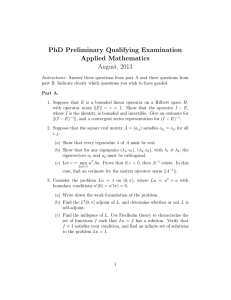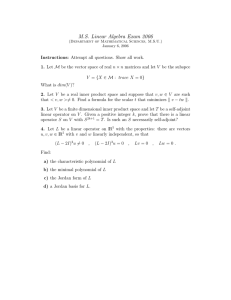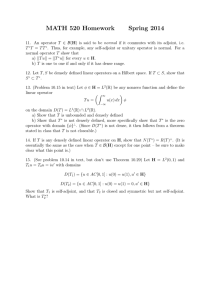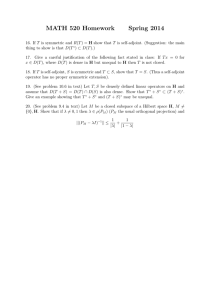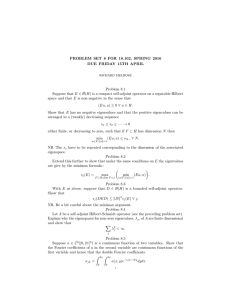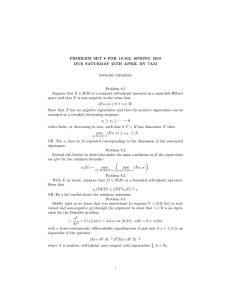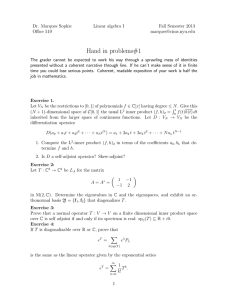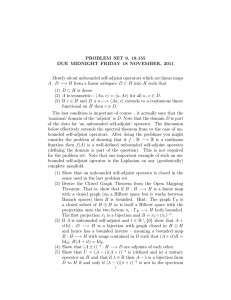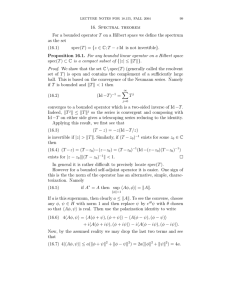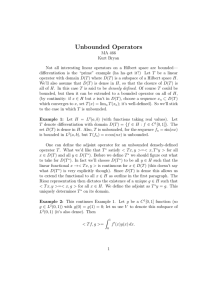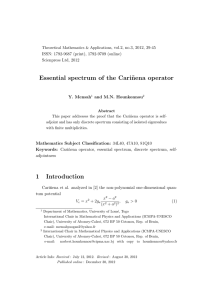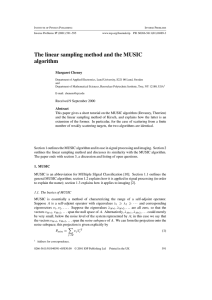1. Let A and B be operators, and assume B... also closed, and if A is densely defined then (A +...
advertisement
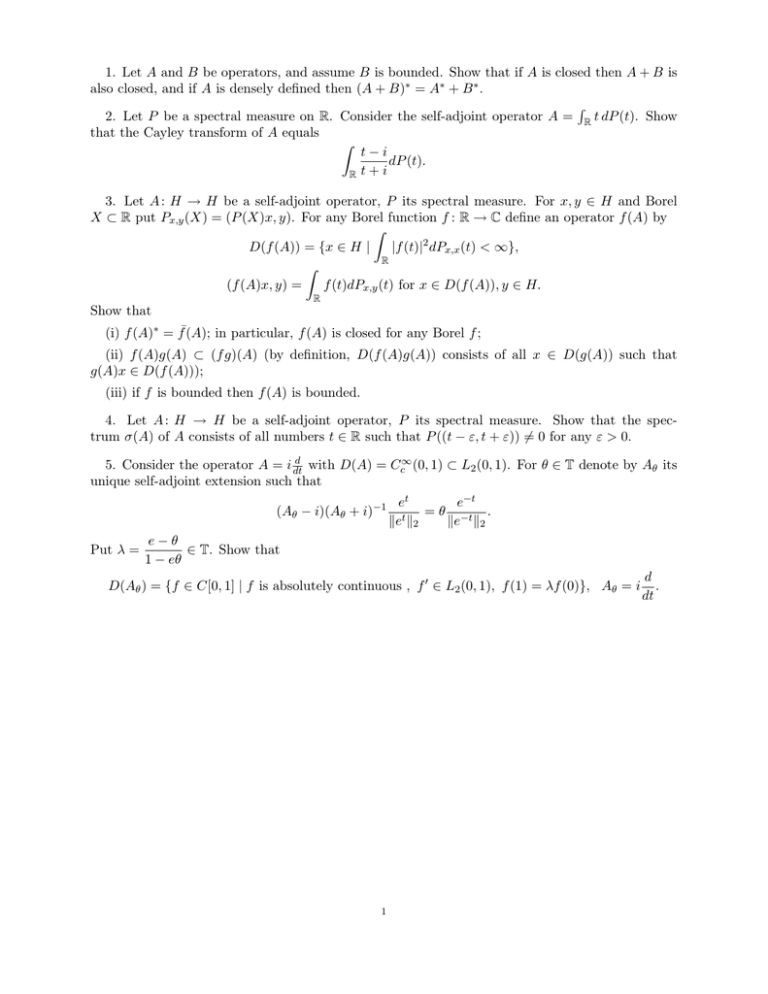
1. Let A and B be operators, and assume B is bounded. Show that if A is closed then A + B is
also closed, and if A is densely defined then (A + B)∗ = A∗ + B ∗ .
R
2. Let P be a spectral measure on R. Consider the self-adjoint operator A = R t dP (t). Show
that the Cayley transform of A equals
Z
t−i
dP (t).
R t+i
3. Let A : H → H be a self-adjoint operator, P its spectral measure. For x, y ∈ H and Borel
X ⊂ R put Px,y (X) = (P (X)x, y). For any Borel function f : R → C define an operator f (A) by
Z
|f (t)|2 dPx,x (t) < ∞},
D(f (A)) = {x ∈ H |
R
Z
f (t)dPx,y (t) for x ∈ D(f (A)), y ∈ H.
(f (A)x, y) =
R
Show that
(i) f (A)∗ = f¯(A); in particular, f (A) is closed for any Borel f ;
(ii) f (A)g(A) ⊂ (f g)(A) (by definition, D(f (A)g(A)) consists of all x ∈ D(g(A)) such that
g(A)x ∈ D(f (A)));
(iii) if f is bounded then f (A) is bounded.
4. Let A : H → H be a self-adjoint operator, P its spectral measure. Show that the spectrum σ(A) of A consists of all numbers t ∈ R such that P ((t − ε, t + ε)) 6= 0 for any ε > 0.
d
5. Consider the operator A = i dt
with D(A) = Cc∞ (0, 1) ⊂ L2 (0, 1). For θ ∈ T denote by Aθ its
unique self-adjoint extension such that
(Aθ − i)(Aθ + i)−1
Put λ =
et
e−t
=
θ
.
ket k2
ke−t k2
e−θ
∈ T. Show that
1 − eθ
D(Aθ ) = {f ∈ C[0, 1] | f is absolutely continuous , f 0 ∈ L2 (0, 1), f (1) = λf (0)}, Aθ = i
1
d
.
dt
